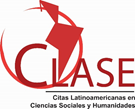Entornos virtuales de aprendizaje y su relación con el aprendizaje colaborativo en estudiantes de una universidad pública de Trujillo, Perú
Resumen
El objetivo general fue determinar la relación existente entre los entornos virtuales de aprendizaje (EVA) y el aprendizaje colaborativo en estudiantes de una universidad pública de Trujillo, Perú. Los objetivos específicos fueron: identificar la relación existente entre la interactividad y el aprendizaje colaborativo; precisar la relación existente entre la flexibilidad y el aprendizaje colaborativo; analizar la relación existente entre la escalabilidad y el aprendizaje colaborativo; evaluar la relación existente entre la estandarización y el aprendizaje colaborativo y evaluar la relación existente entre la ubicuidad y el aprendizaje colaborativo. El estudio fue de tipo básico, enfoque cuantitativo, diseño no experimental y nivel descriptivo correlacional. La población fueron 465 estudiantes de ingeniería industrial de una universidad pública de Trujillo. La muestra fue de 36 estudiantes del 8vo ciclo de ingeniería industrial. El cuestionario contó con 40 preguntas relacionadas con las variables y sus dimensiones. Cada pregunta tuvo cinco opciones de respuesta, según una escala tipo Likert. Los datos se recopilaron de manera virtual y su procesamiento mediante los programas Microsoft Excel y SPSS versión 25. Los resultados indican que existen una relación significativa alta entre los EVA y el aprendizaje colaborativo en estudiantes de una universidad pública de Trujillo, dado que r=0.795 y sig=0.000<0.05.
Palabras clave:
Entornos virtuales, colaborativo, interactividad, flexibilidad, escalabilidad
The general objective was to determine the relationship between virtual learning environments (VLE) and collaborative learning in students of a public university in Trujillo, Peru. The specific objectives were: to identify the relationship between interactivity and collaborative learning; specify the relationship between flexibility and collaborative learning; analyze the relationship between scalability and collaborative learning; evaluate the relationship between standardization and collaborative learning and assess the relationship between ubiquity and collaborative learning. The study was of a basic type, quantitative approach, non-experimental design and correlational descriptive level. The population was 465 industrial engineering students from a public university in Trujillo. The sample consisted of 36 students of the 8th cycle of industrial engineering. The questionnaire had 40 questions related to the variables and their dimensions. Each question had five response options, according to a Likert-type scale. The data was collected virtually and processed using the Microsoft Excel and SPSS version 25 programs. The results indicate that there is a significant high relationship between the EVA and collaborative learning in students from a public university in Trujillo, since r=0.795 and sig=0.000<0.05.
Keywords:
Virtual environments, collaborative, interactivity, flexibility, scalability
Descargas
Descargas
Publicado
Cómo citar
Número
Sección
Licencia
La editorial "Universo Sur", de la Universidad de Cienfuegos, publica el contenido de la Revista "Conrado" bajo una Licencia Creative Commons Atribución-NoComercial-SinDerivar 4.0 Internacional.
© Podrá reproducirse y socializarse, de forma parcial o total, el contenido de esta publicación, sin fines comerciales, siempre que se haga de forma literal y se mencione la fuente.







